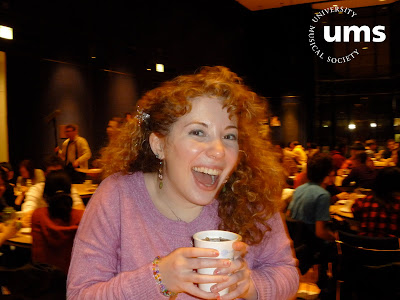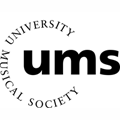“Climate Change: The Musical.”
Not exactly a Tony-Award winning concept, is it? Even I, someone who isn’t directly involved in the performing arts in any way, can identify such a concept as a an undeniable flop. But, as a Generation Y-er, I’m intrinsically concerned with the state of our environment, and exploring way to curb mankind’s damaging impact on our plant. Certainly there must be a way to utilize the arts—our micro-bubble of beauty in this destructive macrocosm—to not only reach the public, but get them to care about the environment, change their ways, and cultivate a better world.
I know. It’s far-fetched. Or so I thought.
About twenty minutes ago, I left a 3ish-hour long presentation called “At the ‘Tipping Point’: Artists and Climate Change” here at the Association of Performing Arts Presenters (APAP) conference.
What just happened to me in those three hours was monumentally impactful in a way I never imagined.
I was skeptical when I volunteered work the event. In my experience, most attempts to blend the arts (whether music, dance, visual, written, theatre, etc.) with “save the environment” message always fell short in my book. It was either too cheesy, too dull, too strange, too new-age-y, too political (yes, that’s looking at you, Al Gore), or, honestly, just felt half-baked: the execution of the project didn’t do the message justice; the implementation either made the work feel immature or overwhelmed me with so many statistics and scare tactics that I felt diluted by too much science mumbo-jumbo that I just didn’t understand.
Fortunately, I discovered I wasn’t alone in this realization.
The presentation addressed this problem directly: how can we use the Arts to engage audiences while also educating them about the importance of global warming? There must be some middle ground; there must be a way for the Arts, as influential a field as it is, to strike deep into the very core of humans. It must be a part (if not the leader) of a radical movement to alter our lifetstyles, ways of thinking, and priorities.
But how?
We can’t turn everyone into Greenie Extremists and expect people to trade their cars in for bikes or build a compost pile in their backyard. Even if we could, finding a way to globalize those ideals through any medium would be darned-near impossible.
Graham Devlin, the keynote speaker of the presentation and a chair member at Tipping Point, emphasized the importance of getting artists themselves to care about the issue. Even just being at this conference for the last two days, I understand what he’s talking about: amid an overwhelming, bustling world of BlackBerries and social networking, why would—or SHOULD—an artist living in the heart of a metropolitan area care about the ice caps melting? The effects of global warming, despite all the PSAs, local protests, and political agendas, are hardly something these people are exposed to on a daily basis. They’re more concerned about getting a gig (or, in the case of presenters, finding a propritious gig) than they are about saving the world. I can’t blame them, really: part of my reason for attending this conference is to get myself into this networking world, and preventing the polar ice caps from melting is the last thing on my mind.
So, Devlin proposes, if we get the artists to care, we can get thier audiences to care. You don’t need hoaxy, trite ideas like “Climate Change: The Musical” in order to reach large groups of people. (Of course, don’t get me wrong: what I learned about the work done at the COP15 Coppenhagen Conference not only struck me as being of great importance, but also on a large-scale level that impacted people from all walks of life. Politicians, activists, chefs, artists, Average Joe: everyone could see, hear, touch, and experience the crisis we face as a planet).
But there are ideas fostered in a smaller realm that can be just as, if not more, impactful. Composer Robert Juan Rodriguez worked with Susie Ibarra to make a film (“Song of the Bird King”) about the impact of climate change on the indigenous people of the Phillipenes. They visited the tribe, heard their stories, recorded their music, and felt their pain. This tribe, losing their precious Lake Sabu to big-business filth, directly feel the changes of our planet; their everyday life is crumbling due to changes in the environment, and yet they have virtually nothing to do with its downfall whatsoever. Rodriguez and Ibarra, emotionally drawn to these people and their disastrous calamity, created a beautiful film (and soundtrack) that wasn’t corny or too in-your-face, change-your-ways-before-you-kill-us-all, but was incredibly heart-wrenching. Sure, a lot of it was due to the tragedy of the Filipinos, but it was also a result of the masterful work of the artists; they brought this world to us, and by doing so, they force us to register how what we do in our lives effects people a few, a hundred, or even thousands of miles away.
For me, though, this entire presentation was owned by the work of Natalie Jeremijenko and the Environmental Health Clinic. Her work was just…wow. It floored me. She absolutely, positively floored me.
Never in my life did I believe the nitty-gritty facts and statistics of science could blend so cohesively into a world of asethetics in such a beautiful, stream-lined, innovative manner. Her work is stunning. Gorgeous.
Sitting there, watching her presentation, I didn’t just feel motivated to change the world, I wanted in on this projected. I wanted to be doing this work. I wanted to be coming up with these brilliant public demonstrations like the No Parks and Tadpole Walkers. If they seem absurd, then their absurdity is what captivates an audience and lies at the heart of Jeremijenko’s success. I wasn’t alone in my awe; everyone was captivated by her work with eXperimental design.
After her work, I felt a calling from myself to do something along these lines. True, Jeremijenko works in a visual realm, and APAP is centralized around performing arts, but who says the visual arts can’t be a performance? That’s exactly what Jeremijenko brings to the table with her work, and that’s exactly why I find myself overwhelmingly drawn to her work and the possibilities it opens up not only for climate change, the visual arts, arts presenters, and performing arts, but also for what it does to me. It inspires me. Even though, I admit, I get inspired a lot and by a lot of things (read: pretty much everything), Jeremijenko presented a world to me that I could live and work in, and make my own.
The work she presented in a visual world (which is where I feel truly at home) can easily be transposed to music, theatre, and dance. Arts presenters can find similar ways to hook their audiences and get them to interact creatively with the performance. It’s brilliant. Everything is transferable, especially in a field as creative and fluid as the arts. That’s what I loved about sitting in on this seminar: imagine all the things we could do! I keep imagining a performing center blended with some visual arts gallery or studio. Or something Pollock-esque, where visual arts can be performed for an audience to get across a social message, or spark interest in a problem. The possibilities overwhelm me at times, but more than anything, they excite me.
And, really, that’s what APAP brings to me. Even though it’s great for social networking, at its core, it’s about sharing ideas and sparking excitement in others about what you do, and collaborating to build the best experience for everyone involved. Artist, presenter, and audience can all gain from a show, or even the pre-show and post-show. The field of arts presenting is larger than I ever imagined, and much more dynamic than my previous conceptions. That is what truly excites me.
By: Maureen Stych
UMS Intern











